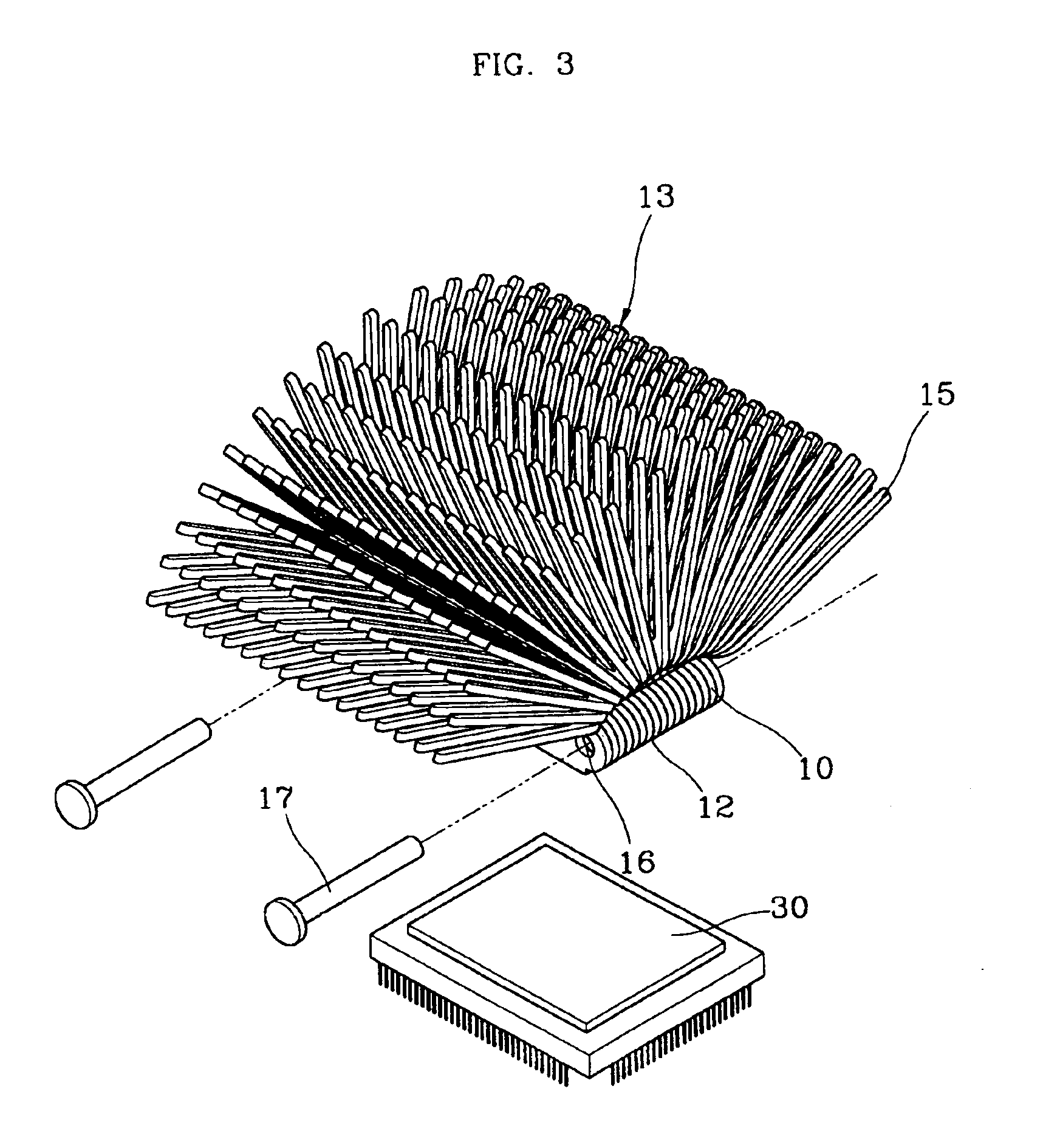Heatsink for electronic component
a technology for electronic components and heat sinks, applied in the field of heat sinks, can solve the problems of electronic components, electronic components may become damaged, and two methods cannot be applied to materials having a high thermal conductivity, and achieve the effect of maintaining registration and preventing distortion of binding portions
- Summary
- Abstract
- Description
- Claims
- Application Information
AI Technical Summary
Benefits of technology
Problems solved by technology
Method used
Image
Examples
Embodiment Construction
[0038]A good heatsink should effectively absorb the heat generated by heat-generating parts without power consumption and without generating noise and vibrations, and transfer the absorbed heat into the surrounding air. Also, the manufacturing process should be easy. That is, a good heatsink is a heatsink capable of keeping the temperature of the heat-generating parts at the lowest level without using a cooling fan, and can be made easily. In addition, by installing a fan capable of forcibly blowing air over and around the heatsink, the heat dissipating efficiency can be further increased.
[0039]The technical idea of a heatsink according to the present invention, for satisfying the above conditions, is to manufacture a heatsink through a pressing process, which allows a plurality of heatsink units to be stacked on one another, using aluminum (Al) or copper (Cu) having a high thermal conductivity as the material, such that the thermally conductive pathway can be as short as possible. ...
PUM
 Login to View More
Login to View More Abstract
Description
Claims
Application Information
 Login to View More
Login to View More - R&D
- Intellectual Property
- Life Sciences
- Materials
- Tech Scout
- Unparalleled Data Quality
- Higher Quality Content
- 60% Fewer Hallucinations
Browse by: Latest US Patents, China's latest patents, Technical Efficacy Thesaurus, Application Domain, Technology Topic, Popular Technical Reports.
© 2025 PatSnap. All rights reserved.Legal|Privacy policy|Modern Slavery Act Transparency Statement|Sitemap|About US| Contact US: help@patsnap.com



